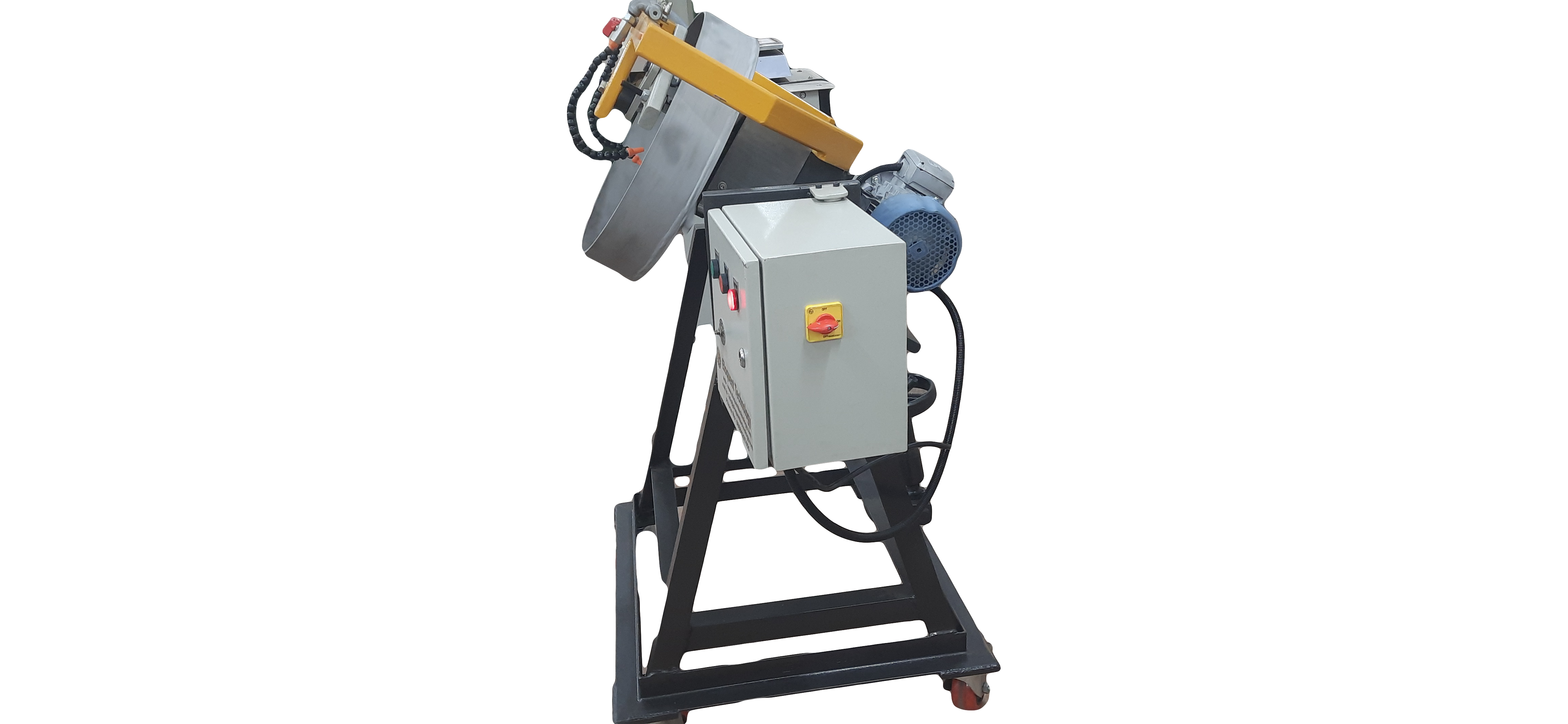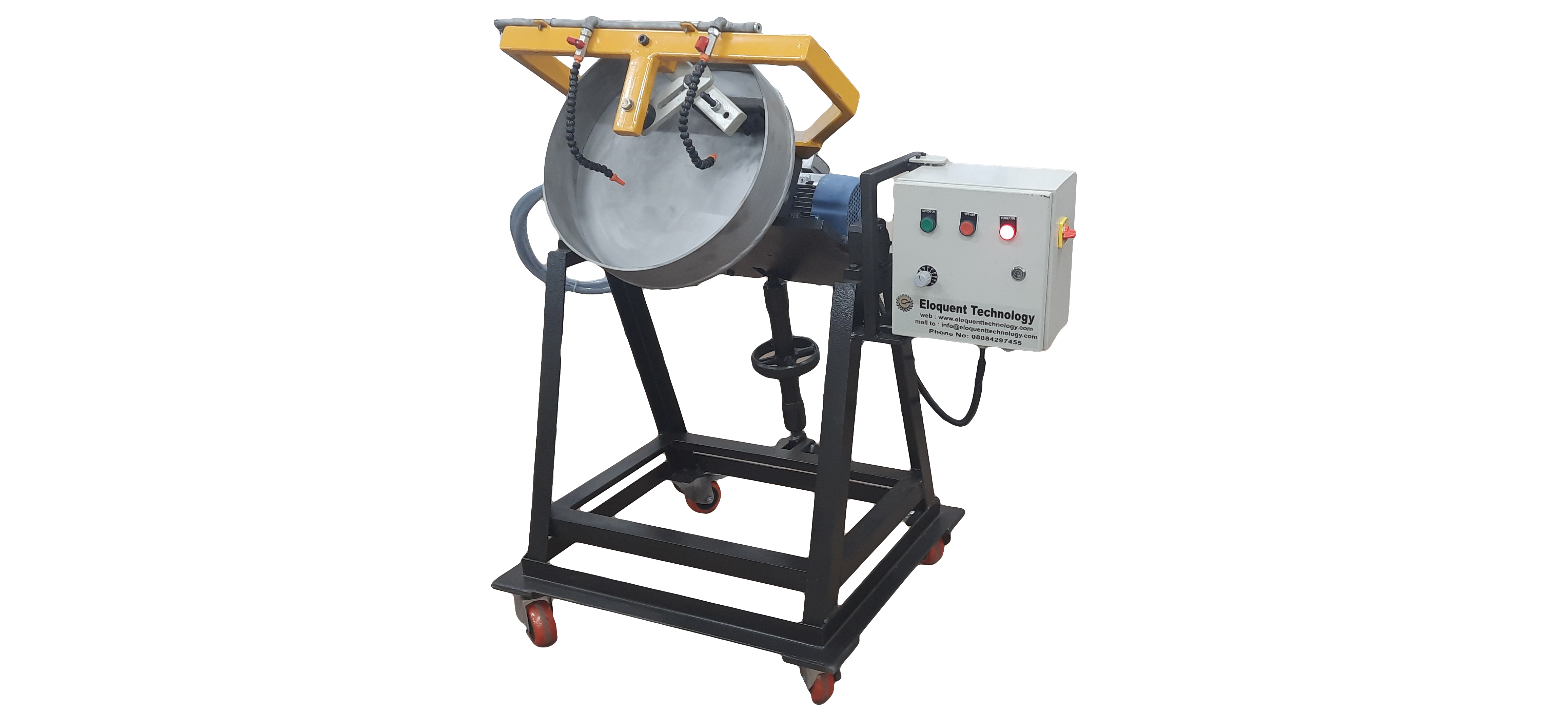Disc Pelletizer
- Eloquent ball mill is a efficient grinding device used to reduce the size of materials in various industries.
- It consists of a cylindrical shell filled with grinding media, such as steel or ceramic balls, and the material to be ground.
- As the shell rotates, the balls tumble, crushing and grinding the material into a fine powder.
- Eloquent Ball mills are widely used in industries such as mining, cement, ceramics, chemicals, and pharmaceuticals for their ability to produce uniform particle sizes and fine powders.
- Eloquent ball Mill take care of any kind of pulverizing, grinding and crushing.
Know More
Purpose
- Primary purpose of Eloquent Ball Mill are ;Eloquents Ball mill is a type of grinder used to grind, blend, and sometimes crushing materials for use in mineral dressing processes, paints, pyrotechnics, ceramics etc. The primary purpose of a ball mill is to reduce the size of the material being processed and to induce a mechanical alloying or blending of materials. Here are the key purposes of a ball mill:
- Grinding and Size Reduction:
- The primary function of a ball mill is to grind materials into finer particles. This is achieved through the impact and attrition forces generated by the movement of balls within the rotating drum. The grinding process can reduce the material to micron or even nanometer sizes, depending on the duration of milling and the size of the balls used.
- Blending and Mixing:
- Ball mills are also used to blend and mix materials. This is particularly useful in preparing materials for further processing or for creating homogeneous mixtures. For example, in the pharmaceutical industry, ball mills can be used to mix active ingredients with excipients to create uniform powders for tablet formation.
- Mechanical Alloying:
- In mechanical alloying, ball mills are used to produce alloys by grinding together metal powders and other ingredients. This process can create new materials with unique properties that cannot be achieved by conventional melting and casting methods.
- Creating Nanostructures:
- Ball mills can be used to produce nanoparticles by reducing the particle size of materials to nanometer scales. This is important in fields like materials science and nanotechnology, where nanostructured materials are sought for their unique physical and chemical properties.
- Liberation of Minerals:
- In mineral processing, ball mills are used to liberate valuable minerals from the surrounding gangue. The grinding process reduces the ore to a fine powder, allowing for the separation of valuable minerals through subsequent processes like flotation, magnetic separation, or leaching.
- Preparing Raw Materials:
- Ball mills are used to prepare raw materials for various industrial processes, such as cement production, where limestone and other materials are ground to a fine powder before being heated in a kiln.
- Energy Storage and Conversion:
In recent research, ball mills are used in the synthesis of materials for energy storage devices like batteries and super capacitors, where precise control over particle size and composition is crucial.
Features
Feed Size – Up to 10 mm
Power – 1.5 kw/2 HP,3 Phase,430 V,50 Hz,4 pole, 10 Amps
Capacity – up to 50kg
Feed Material – Medium, Medium-hard, Brittle, Plastic, Soft, Fibrous
Applications
1. Mineral Processing:
- Ore Grinding: Eloquent Ball mills are commonly used in mining to grind ore into fine particles, liberating valuable minerals from the surrounding gangue. This facilitates further processing, such as flotation or leaching, to extract the desired metals.
2. Cement Industry:
- Clinker Grinding: In cement production, ball mills are used to grind clinker, the intermediate product in the cement manufacturing process, into a fine powder. This powder is then mixed with gypsum to produce cement.
3. Chemical Industry:
- Pigment and Paint Manufacturing: Ball mills are used to grind and blend pigments and other components in paint manufacturing. They help achieve uniform color and consistency in the final product.
- Pharmaceuticals: In the pharmaceutical industry, ball mills are used to grind active ingredients and excipients to achieve the desired particle size for better solubility and bioavailability.
4. Ceramics and Glass Manufacturing:
- Glaze Preparation: Ball mills are used to grind raw materials and prepare glazes in the ceramics industry. They ensure that the glaze is of consistent quality and free of large particles that could cause defects in the finished product.
- Glass Powder Production: Ball mills are also used in the production of glass powders for various applications, including glass ceramics and specialty glasses.
5. Environmental Engineering:
- Soil and Waste Treatment: Ball mills can be used to grind contaminated soils or solid waste, facilitating the extraction or neutralization of hazardous components.
- Battery Recycling: They are employed in the recycling of batteries to grind materials for the recovery of valuable metals.
6. Material Synthesis:
- Nanomaterials: Ball mills are used in the production of nanomaterials, where the goal is to reduce the particle size to the nanoscale. This is important in research and development for various applications, including electronics, coatings, and medicine.
- Mechanical Alloying: In this process, ball mills are used to blend metals and produce alloys with unique properties, which cannot be achieved through traditional melting methods.
7. Pyrotechnics:
- Explosive and Firework Manufacture: Ball mills are used to grind and blend powders in the production of fireworks and other pyrotechnic products, ensuring uniformity in burn rate and color output.
8. Energy Storage:
- Battery and Super capacitor Materials: Ball mills are used in the preparation of materials for energy storage devices, such as batteries and super capacitors. This includes grinding materials like lithium iron phosphate or activated carbon to achieve the required particle size and properties.
Mechanism
- Rotating Cylinder
- Structure: A ball mill consists of a cylindrical shell that rotates around its axis. The shell is typically made of steel and is lined with materials that are abrasion-resistant, such as rubber or manganese steel.
- Rotation: The cylinder is usually driven by an electric motor, and its speed can be adjusted to control the grinding process.
- Grinding Media (Balls)
- Composition: The grinding media can be made of steel, stainless steel, ceramic, or other materials. The choice of material depends on the nature of the material being ground and the required purity of the final product.
- Size and Density: The size and density of the balls affect the grinding efficiency. Smaller balls provide a larger surface area for grinding but may not impart as much force as larger balls. The density of the balls also affects their impact force.
- Material to be Ground
- Feed Material: The material to be ground is fed into the mill. It can range from hard ores and rocks to soft and brittle materials.
- Grinding: The purpose is to reduce the particle size of the material to the desired level, often to create a fine powder.
- Mechanisms of Grinding
- Impact: As the cylindrical shell rotates, the grinding media are lifted up on the rising side of the shell and then cascade or drop down, striking the material to be ground. This impact force fractures the material into smaller pieces.
- Attrition: When the grinding media slide past each other or against the mill’s lining, they grind the material by a shearing action. This is effective for finer grinding.
- Compression: In some cases, the particles are crushed by the weight of the balls and the material itself.
- Motion of Grinding Media
- Cascading: At lower speeds, the balls simply roll along the inner surface of the mill. This is known as cascading and results in a primarily attrition-based grinding mechanism.
- Cataracting: At higher speeds, the balls are lifted higher and fall, impacting the material with greater force. This is known as cataracting and results in a more impact-based grinding mechanism.
- Centrifuging: At very high speeds, the balls are held against the wall of the mill by centrifugal force and do not fall. This is generally undesirable because it reduces the efficiency of the grinding process.
- Discharge of Ground Material
- Grate Discharge: Some ball mills have a grate at the discharge end to allow finely ground material to pass through while retaining the grinding media and larger particles within the mill for further grinding.
- Overflow Discharge: In overflow discharge mills, the material overflows from the discharge end, often over a weir or through an open-ended configuration, allowing the mill to operate continuously.
- Control and Optimization
- Variables: Several variables influence the efficiency and outcome of the grinding process, including the speed of rotation, the load of grinding media, the size distribution of the grinding media, the mill’s filling level, and the type of material being processed.
- Automation: Modern ball mills often use control systems that automatically adjust these variables to optimize the grinding process and ensure consistent product quality.






